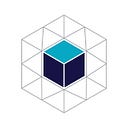WHAT IS SEO?
Search Engine Optimization in 2020 explained
What is SEO?
Search Engine Optimization (SEO) means to change the content and structure of a website so that it gets a higher rank in the search engines. This is done by taking measures to improve the ranking of websites in the organic search results of search engines such as Google. This serves to direct more users to your website.
The aim of search engine optimisation is to ensure that your own website appears as high up in the search results as possible, in the best case among the top 10 search results. To achieve this, the site should be designed in such a way that search engines can read and analyse it optimally. Google uses so-called crawlers that search the internet and evaluate the website, which results in the ranking in the search engines.
How SEO works
SEO shows search engines that their content is the best search result for a specific topic. After all, the aim of search engines is to provide users with the most appropriate result. In order to achieve this, the approach depends on the search engine for which you want to optimise: for example, when improving the traffic on the website, the algorithm of Google is important. Every search engine has its own algorithm.
How to bring more traffic to your website with SEO Tools
SEO tools are programmes that support search engine optimisation. So they form the basis of search engine optimisation. The tools serve to analyse for example the content, the keywords or the backlinks. An SEO tool helps you to analyse the current state of the site and to find out what could be improved. You can use the tools if you want to improve the ranking of your site in the search results and bring more traffic to your website.
Why should you use SEO Tools?
The organic rankings are especially important. In order to achieve a high rank there, you should not only make sure that the content is good but also that it can be found. With the help of the SEO tools, you can monitor your own as well as external rankings in the search result lists. The tools help you with the keyword research in order to be able to use the keyword potentials optimally. Furthermore, links and link networks can be analysed and backlinks can be managed. Another advantage of using the SEO tools is the monitoring of key figures, so you always have the current situation in view.
Tools for SEO
- Sistrix
This tool allows you to monitor visibility in search engines. Relevant keywords, places and languages can be tracked. In addition, Google’s ad ads and texts can be analysed. - Xovi
It is suitable for the analysis of keywords and backlinks and for onpage optimisation. The tool shows the current status of the website in the form of reports and helps to monitor social media channels. - Browseo
The tool shows you the website as the Google Bot sees it, without layout and design - Answerthepublic
Shows the W questions being searched for, related to a specific topic or keyword.
Tips for SEO
- installation of internal links
Include internal links to help search engines better understand the structure of the website. - keyword research
Keyword research is one of the most important aspects of search engine optimisation, as it is used to determine for which keywords you appear in search engines. - shorten the loading time
Loading time is also a ranking factor, because a shorter page loading time has a positive effect on user-friendliness. The longer a page takes to load, the sooner users return to the search results. - find out what users are looking for
Ask yourself: What does the user want to achieve with the search query, what does he want to know? - keep the URL structure of the website concise and precise
This makes it easier to start the search results. - optimise your website for smartphones and tablets
The number of smartphone and tablet users is constantly increasing, so it makes sense to make the website usable for smartphone and tablet users as well. Furthermore, Google “punishes” websites that are not optimised for mobile devices. - leave backlinks
Both the number and the quality are decisive for the ranking here. Increase the number of references by link building. In order to determine how many conversions are generated by visitors via inbound links, you should measure this with a KPI. - alt tags for images
Images are so important that they even have their own section on Google. Therefore it is important to add the keywords in the image name and as caption to rank in the Google images. - create high-quality content
Provide unique, entertaining and informative content for your website users. Write content that users are interested in, they should first write for people and only then for the search engines. - use the Google Search Console
This is a useful tool for monitoring the presence of the website in search results, it provides you with information on indexing and allows you to retrieve search query data. You can also view the backlink pages.
Vollcom Digital GmbH
Thierschstraße 34, 80538 München
info@vollcom-digital.de
